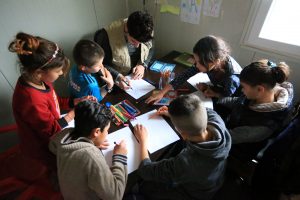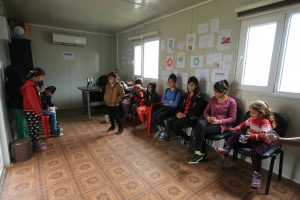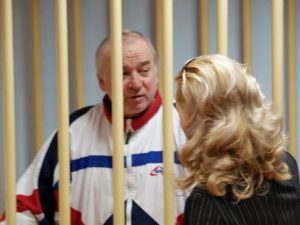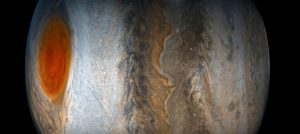
By Aaron Sheldrick and Malcolm Foster
OKUMA, Japan (Reuters) – A costly “ice wall” is failing to keep groundwater from seeping into the stricken Fukushima Dai-ichi nuclear plant, data from operator Tokyo Electric Power Co shows, preventing it from removing radioactive melted fuel at the site seven years after the disaster.
When the ice wall was announced in 2013, Tepco assured skeptics that it would limit the flow of groundwater into the plant’s basements, where it mixes with highly radioactive debris from the site’s reactors, to “nearly nothing.”
However, since the ice wall became fully operational at the end of August, an average of 141 metric tonnes a day of water has seeped into the reactor and turbine areas, more than the average of 132 metric tonnes a day during the prior nine months, a Reuters analysis of the Tepco data showed.
The groundwater seepage has delayed Tepco’s clean-up at the site and may undermine the entire decommissioning process for the plant, which was battered by a tsunami seven years ago this Sunday. Waves knocked out power and triggered meltdowns at three of the site’s six reactors that spewed radiation, forcing 160,000 residents to flee, many of whom have not returned to this once-fertile coast.
Though called an ice wall, Tepco has attempted to create something more like a frozen soil barrier.
Using 34.5 billion yen ($324 million) in public funds, Tepco sunk about 1,500 tubes filled with brine to a depth of 30 meters (100 feet) in a 1.5-kilometre (1-mile) perimeter around four of the plant’s reactors. It then cools the brine to minus 30 degrees Celsius (minus 22 Fahrenheit).
The aim is to freeze the soil into a solid mass that blocks groundwater flowing from the hills west of the plant to the coast.
However, the continuing seepage has created vast amounts of toxic water that Tepco must pump out, decontaminate and store in tanks at Fukushima that now number 1,000, holding 1 million tonnes. It says it will run out of space by early 2021.
“I believe the ice wall was ‘oversold’ in that it would solve all the release and storage concerns,” said Dale Klein, the former chairman of the U.S. Nuclear Regulatory Commission and the head of an external committee advising Tepco on safety issues.
“The hydrology of the Fukushima site is very complicated and thus the exact water flow is hard to predict,” he said, “especially during heavy rains.”
TYPHOON
The water inflows often fluctuate with rainfall. The dry month of January averaged 83 tons a day, Tepco data showed.
But when a typhoon struck during the last week of October, 866 tons a day poured into the reactors.
Overall, Tepco says a combination of drains, pumps and the ice wall has cut water flows by three-quarters, from 490 tons a day during the December 2015 to February 2016 period to an average of 110 tons a day for December 2017 to February 2018.
It is hard to measure exactly how much the ice wall is contributing, Tepco officials say, but based on computer analysis the utility estimates the barrier is reducing water flows by about 95 tonnes a day compared to two years ago, before the barrier was operating.
“Our assessment is that the ice wall has been effective,” said Naohiro Masuda, Tepco’s chief decommissioning officer, adding that rain falling within the ice wall perimeter contributed to surging volumes. “We now believe we have a system in place to manage the water level.”
However, a government-commissioned panel on Wednesday offered a mixed assessment of the ice wall, saying it was partially effective but more steps were needed.
Controlling the groundwater seepage using the ice wall has been central to Japan’s program to show it had the Fukushima decommissioning in hand.
The barrier was announced just days before Tokyo won the bid to host the 2020 Summer Olympics and Prime Minister Shinzo Abe declared that Fukushima was “under control” in his final pitch to the International Olympic Committee.
In addition to the building costs, the ice wall needs an estimated 44 million kilowatt hours of electricity a year to run, enough to power about 15,000 typical Japanese homes.
NO MORE SPACE
Meanwhile, Tepco must decide how to cope with the growing volume of water stored on site.
The purification process removes 62 radioactive elements from the contaminated water but it leaves tritium, a mildly radioactive element that is difficult to separate from water. Not considered harmful in low doses, tritium is released into oceans and rivers by nuclear plants around the world at various national standard levels.
But local residents, particularly fishermen, oppose ocean releases because they fear it will keep consumers from buying Fukushima products. Many countries, including South Korea and China, still have restrictions on produce from Fukushima and neighboring areas.
A government-commissioned task force is examining five options for disposing of the tritium-laced water, including ocean releases, though no decision has been made.
Ken Buesseler, a radiochemist at the Woods Hole Oceanographic Institution in the United States, suggests that Tepco should open the tanks to external inspections to see if the water is safe.
“From the public’s viewpoint, I think they’d want a bit of independent confirmation,” Buesseler said. “It’s no harder and a lot cheaper than building an ice wall.”
(Reporting by Malcolm Foster and Aaron Sheldrick; Editing by Christian Schmollinger)












